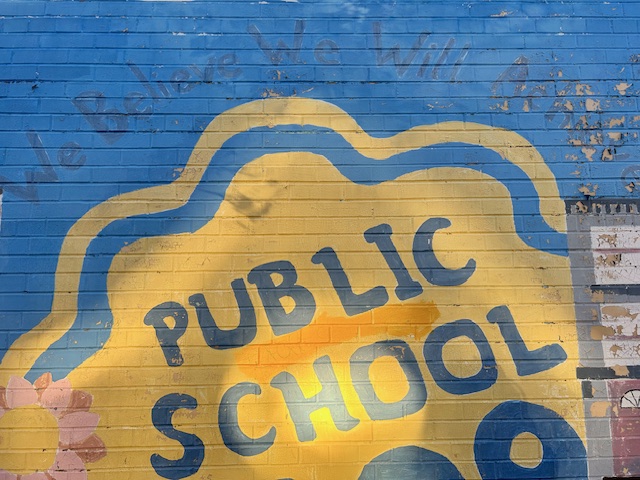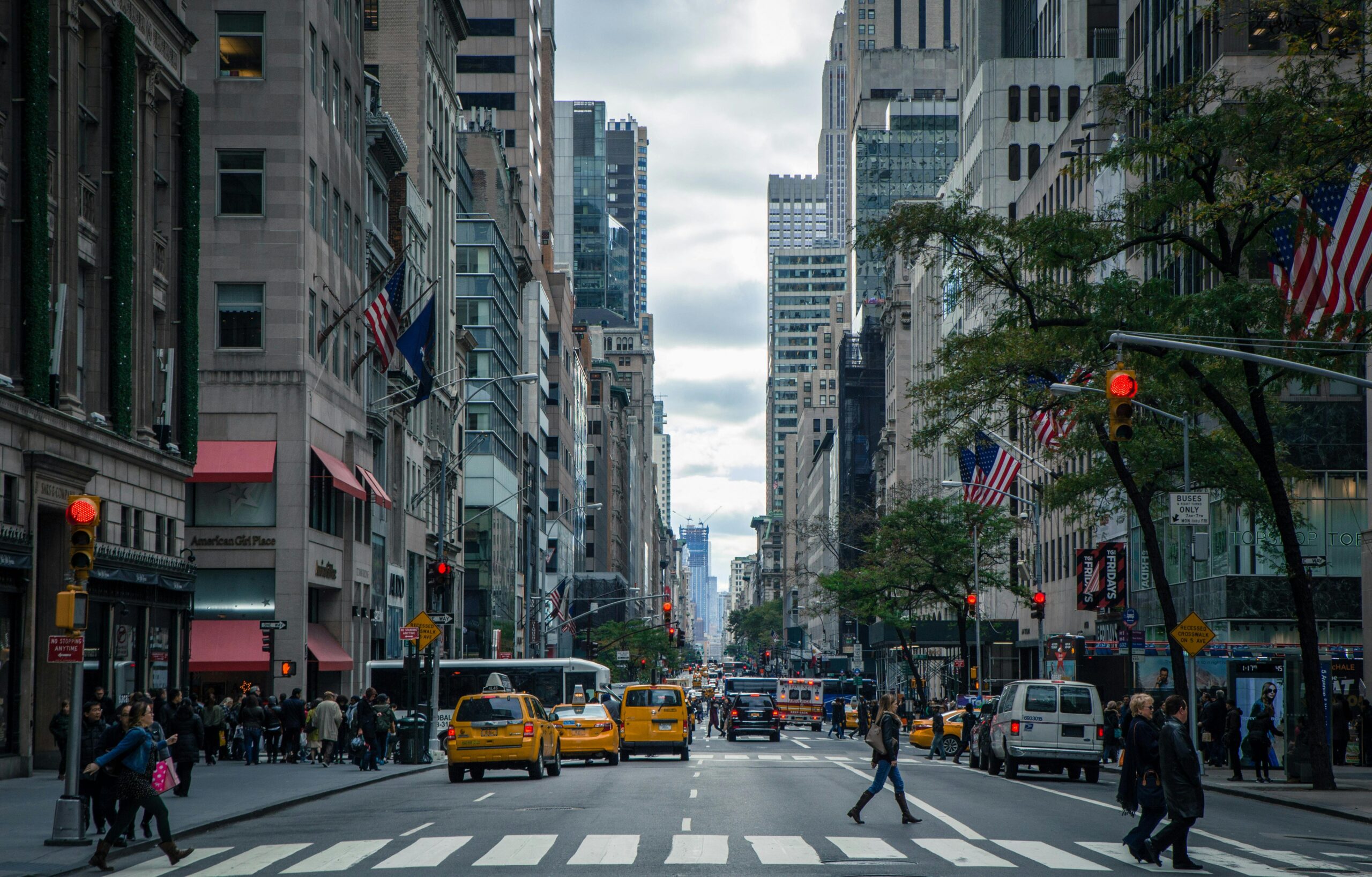In the heart of Manhattan’s East Village, around 3:30 p.m., Stuyvesant Square Park comes alive with everyday caretakers: a dad helping his son with difficult math homework, nannies watching kids throw a football worn with age, and mothers chatting while their kids plead for ice cream truck money. It’s fall, and the energy and excitement of new school year possibilities mixes with the smell of trampled grass and shrill laughter.
Fall is also election season. In late September, 15,000 charter school children and parents swept across the Brooklyn Bridge, a sea of purple and yellow shirts stretching from one end of the bridge to the other, carrying signs that read “Justice means options” and “Excellence not empty seats”. They belong to large charter schools, like Success Academy and Achievement First, that cancelled classes to march for funding that could be impacted after November’s mayoral election.
Education is a hot-button topic this election, as Mamdani will inherit mandates for school funding, class sizes, and charter school caps. Current state law caps charter schools at 460, currently accounting for 15 percent of publicly funded schools.
A new state law, transitioning into effect by 2028, will cap class sizes at 20 for kindergarten to third grade, 23 for fourth to eighth grade, and 25 for high school. This new mandate will put pressure on Mamdani to secure more funds and hire more teachers to be compliant with the law. Furthermore, in 2026, new legislation could reshape mayoral control of the education system. Mamdani’s stance is clear, he wants to weaken mayoral control, but his implementation plan is not.
As students return to the classroom, the mayoral election is shaping up to be one of the most consequential elections for New York City public education, an issue that is dividing and swaying parents.
Charter and Selective Schools
For many New York parents, the chance for their child to attend a charter school and a selective program is worth the sometimes arduous wait of the lottery system.
Charter schools are publicly funded private schools. While district school attendance has declined, charter schools have grown by 8.5 percent over the last three years.
The candidate’s stances differ regarding the expansion of charter schools: Cuomo and Sliwa want to end the charter school cap and expand high-performing charters, while Mamdani wants to focus on directing more funding to public schools.
The candidates also differ on the retention of gifted programs: Cuomo and Sliwa want to keep the programs, while Mamdani wants to cut gifted and specialized programs for children under age five.
Regarding his specific stance on charter schools, Mamdani’s press team could not be reached for comment.
Charter schools are an educational lifeline for some parents, like Renita Matherine, a single mother to her 5-year-old son, Jay, born in March 2020. She chose to send Jay to Saint Bushwick Charter School in Brooklyn after being disappointed and frustrated with public school bullying and the lack of busing and support for her son, who has an IEP (Individualized Education Plan).
“You guys [the DOE] are labeling kids of service they need, but not providing a service for them,” she said.
Matherine explained that, after receiving a speech therapy IEP for Jay, she was told he also needed to be screened for autism and OT (occupational therapy), but never received proper assistance.
Another parent, Carmen Sanchez, considered sending her daughter to the reputable Bronx charter school IKON but was restricted by the lottery-based admissions.
“If you have a family member that has been to any charter school before, there’s a higher chance of getting picked, because they want to be a generational community,” Matherine said.
Matherine also dealt with the lottery system but benefited from generational connections to her son’s Brooklyn charter school.
Public School Busing
Charter schools aren’t the only entities fighting for change this fall. The Road to Better Busing Coalition chanted on the City Hall steps just a few days before the charter school members marched to its doors. Advocates, parents, and students passionately chanted, “What do we want? Better Busing! When do we want it? Now!” and criticized unreliable busing for public school students.
Sanchez was one parent who was directly impacted by the lack of busing. Her son, Jacob, missed two weeks of school from repeated public bus failures.
“I can’t tell you how many times he has missed school, he was late for school, how many times we cried,” she said. “I was involved in ways that I didn’t want to be. I wasn’t liked very often because I’d have to be in a more advocating role.”
Sanchez’s son has autism and needs adequate busing and additional support. Still, she is no stranger to children falling through the cracks of a disparate system.
Sanchez is a social worker who is very involved in her children’s education and safety as an active member of leadership and community safety programs. She enrolled her kids in public schools for their affordability and her support of public education, being a product of the system herself.
“Public school education is kind of like Russian roulette, you never know what you’re going to get,” Sanchez said. “You pray to God that this program is the right one, but it’s all based on a good administrator.”
As for Matherine’s son, he was homeschooled and attended public school before she enrolled him in a charter school. Matherine shared similar dissatisfaction with the lack of public school busing.
“He has an IEP, and to get a bus from where we live, it’s not happening,” she said.
Mamdani has not released a clear plan for busing issues on his platform.
Common Ground: Mayoral Control and Class Size
There are some policies that transcend public versus charter school loyalties: smaller class sizes and weakened mayoral control.
Mayoral control decides who is involved in decision-making and who takes the blame.
Mamdani intends to weaken mayoral control with new legislation next year. He’s calling for an end to centralized decision-making, replacing it with parents, educators, and administrators playing a larger role in decision-making.
Charter and public school parents think a weakened centralized mayoral control could be beneficial for promoting more educational collaboration. However, parts of Mamdani’s educational platform, including his nonspecific educational policy plan for charter schools, has created voting doubt among some parents, like Noela Jordan.
Jordan’s son, Andrew, attended Brooklyn charter schools for his entire primary education. She pointed out her perceived irony in Mamdani’s position.
“So [he] takes public funding away [from charter schools], but yet he would like to have the parents have an input in the budgeting and so forth,” she said.
Jordan praised the strong parent-teacher relationships at her son’s schools and the focus on college prep at a young age.
However, Mamdani’s educational policies on weakened mayoral control and public funding are satisfactory for Chris Newmyer. His 10-year-old son, Elliot, attends Earth Public School in the East Village. Newmyer chose the school for multiple factors: location convenience, the ethnic and cultural makeup of the school, and the de-emphasis on state testing (with students able to opt out of standardized tests).
He wants to see more public funding, particularly for the arts, and parent involvement. “There are things that our school doesn’t get, funding-wise,” said Newmyer. “If there was plenty of money to go around, then great, give money to charter schools too. But if you’re taking money out of public schools…it’s not a fun place to be.”
Both charter and public school parents also agree on support for the class size mandates.
“I cannot support a candidate who is in support of a larger class size,” Sanchez said.
Through her teacher connections, she has witnessed how great smaller class sizes are for both teachers and students. New York City recently passed a mandate on class sizes to combat teacher attrition and student absenteeism, which has soared since COVID. But critics say some students would be pushed into other schools or forced to travel far distances.
Education’s Future
With educational change comes stronger parental voices. Parents with kids in charter and public schools explain how education felt secondary and vague in the candidates’ campaigns before the election, and are dissatisfied with Mamdani’s lack of details for his education plans. Others are disillusioned with educational politics as a whole.
“The thing with politics is that everybody talks a good game,” Jordan said. “You know, for you to vote for them, and then when they get in office, they don’t do half the crap they say that they’re gonna do.”
Parents are in a difficult position this fall. Some are pushed into advocacy, some seek out charters, and most are simply trying to finish their workday and ensure their child gets to school the next morning.
If Mamdani wants to assure these parents, he will have to show he cares about the next generation’s future education. In the end, it’s the kids who will be impacted most this election season.
“I feel like oftentimes education just gets thrown away,” Sanchez said. “We throw money here, we throw money there, and our kids are always lost in these elections.”


